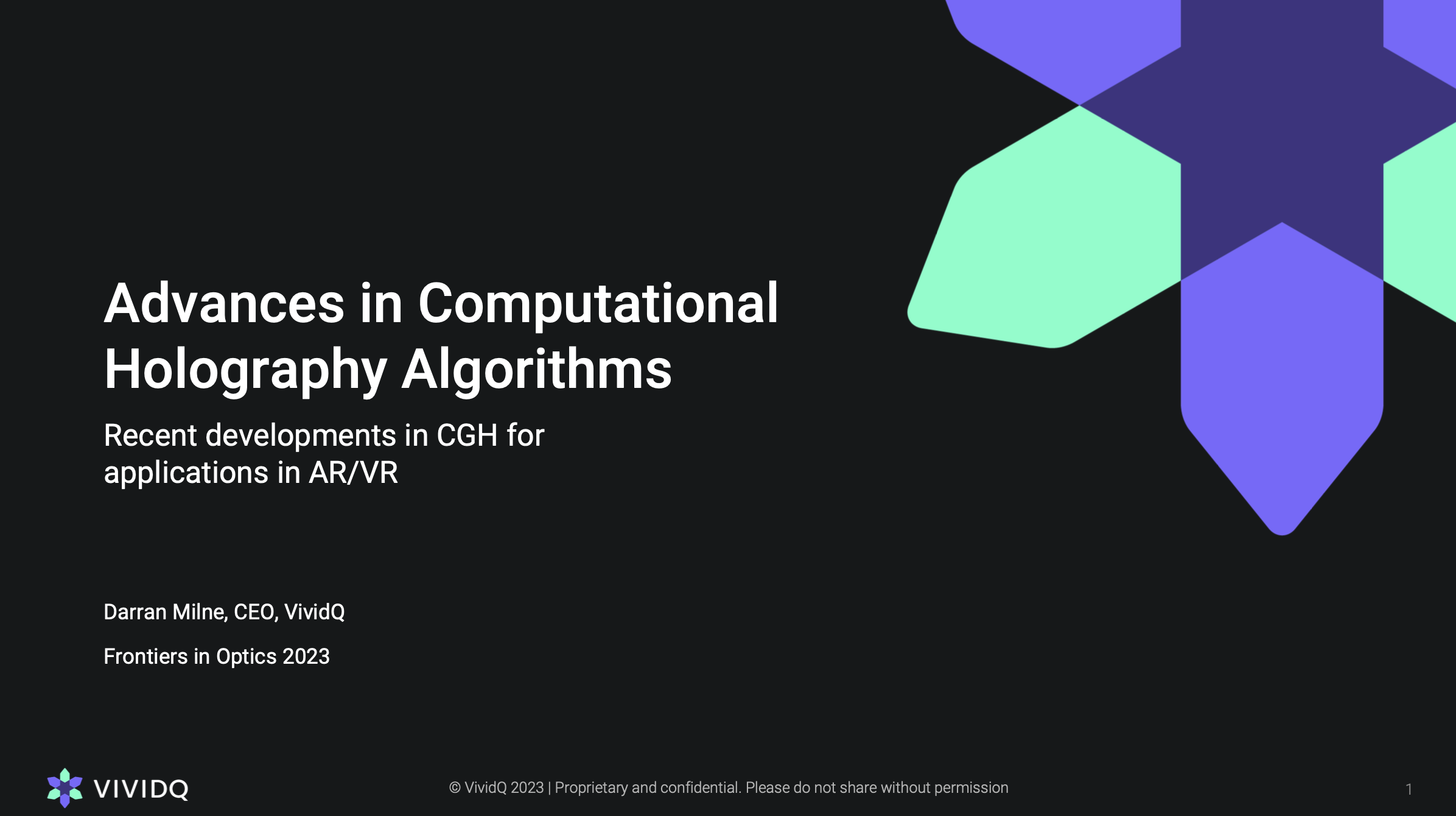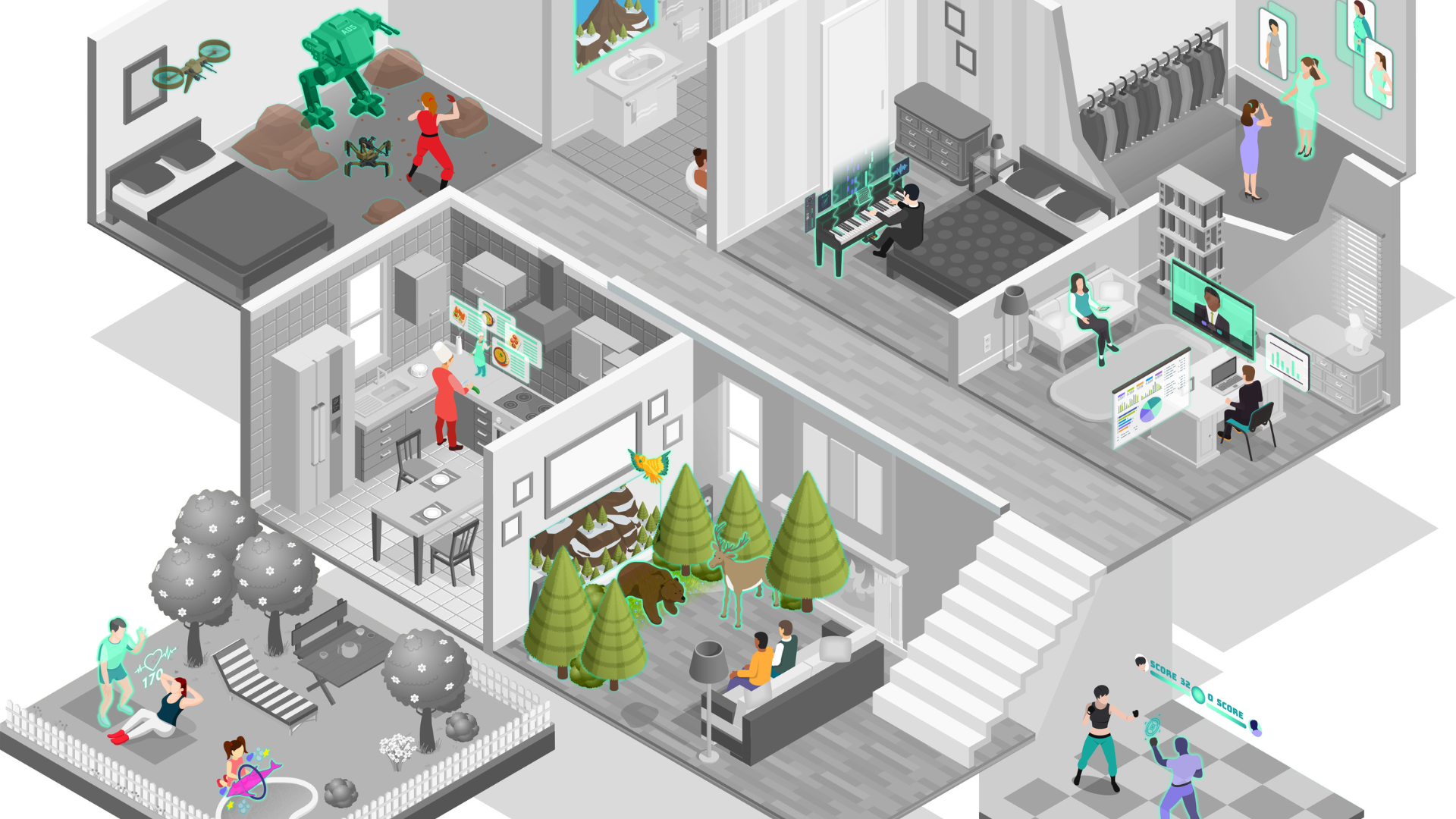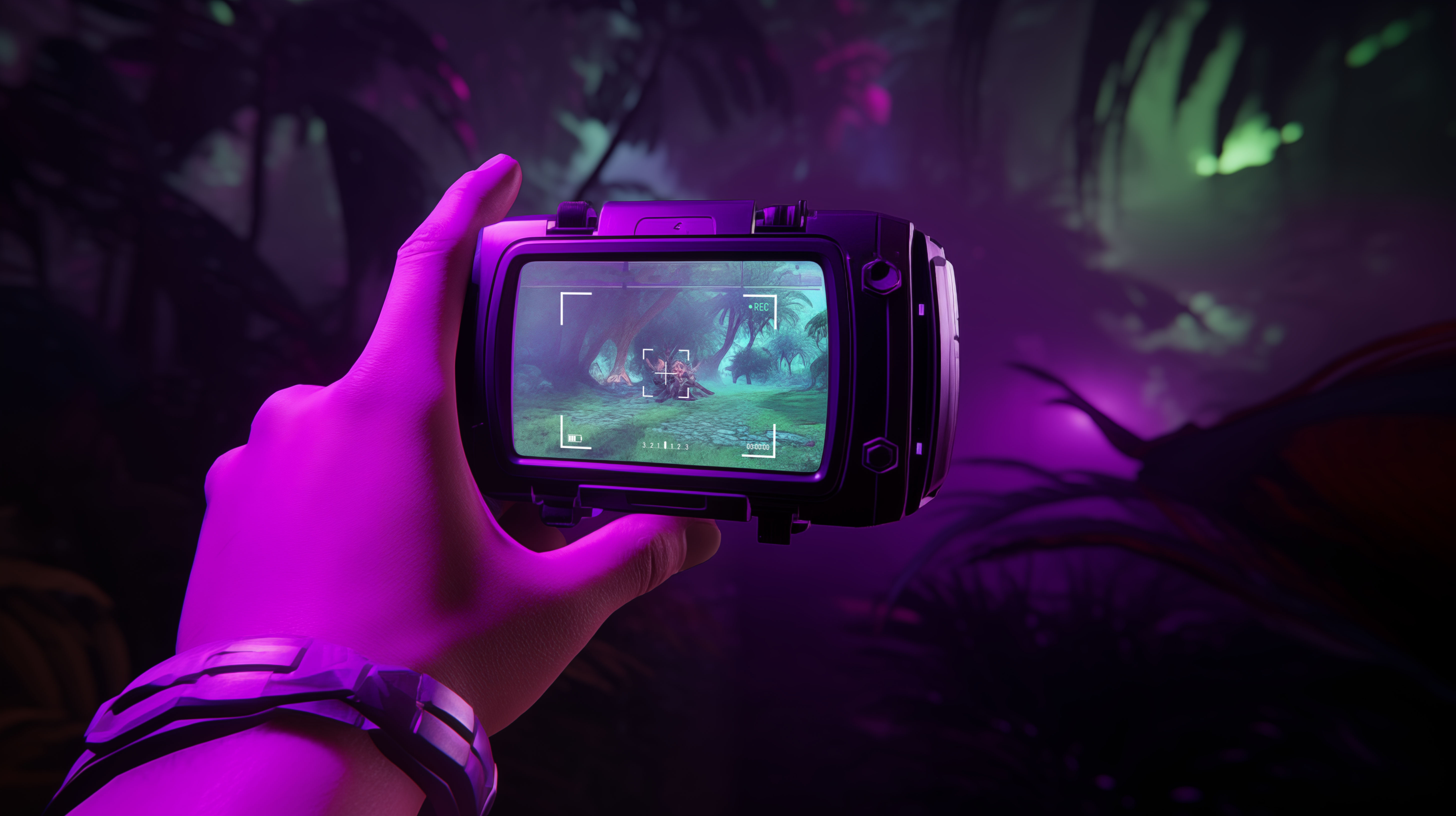Download our whitepaper
It will explain more about Computer-Generated Holography and why it represents the future of AR wearables.
We use Mailchimp as our marketing platform. By clicking below to subscribe, you acknowledge that your information will be transferred to Mailchimp for processing. Learn more about Mailchimp's privacy practices here.

Frontiers in Optics 2023: The 3rd generation of VR is well on its way

By Darran Milne, CEO
The product adoption cycle is a well known phenomenon, most clearly detailed in the now classic “Crossing the Chasm” by G.A. Moore. There we find that products go through several generations before they find their way to success. Exciting and engaging different kinds of audiences as they progress.
I had the lessons of that book ringing in my ears (literally) listening to Tony Fadell’s (designer of Apple iPod, iPhone) view on product development in his book “Build: An Unorthodox Guide to Making Things Worth Making” on Audible, while walking into the Tacoma Convention Centre for the start of Frontiers in Optics (FiO) back in October. For those that haven’t read these books (and I heartily recommend you do), one of the main messages is that companies building technology products face a tricky gap to navigate - The Chasm - between their early market customers - innovators, visionaries and early adopters that might appreciate your technology for the sheer cleverness or inventiveness and the early majority of customers that want a fully functional product with clear and readily understood application and value.

What’s more, products typically have to go through at least three generations before they become palatable to that early majority. The bugs need to be kicked out, the interface has to be easy to work with and the public have to be educated on why they need it and have supporting affirmation from those early adopters via reviews and tech articles.
Mapping these ideas onto my own industry, it seems that VR has now entered its second generation. We are moving beyond appealing to just the tech enthusiasts that will put up with a buggy, cumbersome headset, with a tedious and non intuitive setup and interface. The lessons from that first generation have been learned and now with the launch of Meta Quest 3, PSVR 2, Pico 4 and others, we are seeing VR that more early adopters can get to grips with.
Listening to the first session at FiO on Virtual Reality and Augmented Vision, it was obvious that the third generation is already swiftly on its way. While the new products launched this year are a huge improvement on the previous, there are still major problems to solve to traverse the chasm to access the early majority of customers. One of the major themes of this conference was the VR display system, with several companies and academic institutions proposing new display architectures to solve current VR as well as upcoming AR display challenges. Prof Rolland of the University of Rochester, gave an excellent keynote on the history of VR display and the next advances that must be achieved to realise mass consumer VR. It was notable to me that Computer-Generated Holography (CGH) was listed as one of the key technologies for these next generation headsets as 3D display is the only way to resolve some of the trickier problems for immersive display.
This theme continued, with CGH being the subject of multiple talks in the VR/AR conference track. My own talk concentrated on the algorithmic approaches to CGH. While it has always been a promising technology, holographic display has historically been considered too computationally expensive to run on anything like a headset - at least with anything approaching acceptable image quality. The power and size of the computer needed to calculate a 3D hologram is just too great and no one wants to wear a backpack full of GPUs to play a game. This is a problem that we have been tackling head on and I reported on some of our recent breakthroughs in speed, reduction of compute overhead and improvement to image fidelity. We’ve seen amazing progress in the last couple of years, faster than even we had expected and a highlight of the trip was showing one of our demo holographic projectors to a select audience of VR industry heavyweights. The response and excitement was visceral - for the first time they could see a full 3D hologram, generated in real-time with image quality comparable (or even better) than a standard 2D display and a way to integrate this capability into upcoming VR headsets.

This is a turning point for VR and the beginning of the third generation. Meta, Apple, Sony and the others know that the sunk cost of their first products and the high cost of sale they’ve endured so far, will be made back many times over when they access the mass market. Now the technology to make that happen is available. This will be the make or break moment for VR, the next 24 months will be pivotal and define the success or failure of the entire industry.
.svg)






